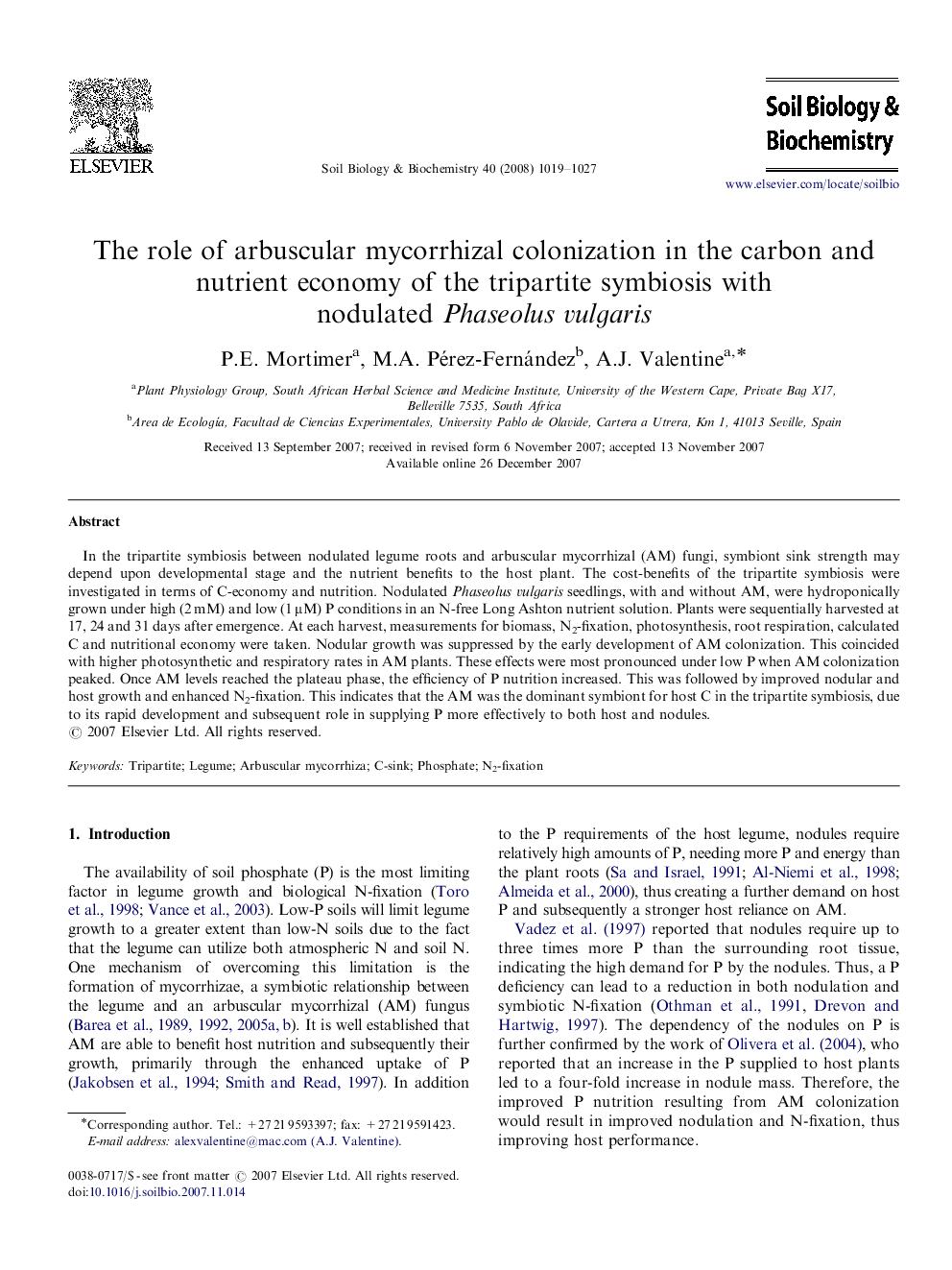| Article ID | Journal | Published Year | Pages | File Type |
|---|---|---|---|---|
| 2026018 | Soil Biology and Biochemistry | 2008 | 9 Pages |
In the tripartite symbiosis between nodulated legume roots and arbuscular mycorrhizal (AM) fungi, symbiont sink strength may depend upon developmental stage and the nutrient benefits to the host plant. The cost-benefits of the tripartite symbiosis were investigated in terms of C-economy and nutrition. Nodulated Phaseolus vulgaris seedlings, with and without AM, were hydroponically grown under high (2 mM) and low (1 μM) P conditions in an N-free Long Ashton nutrient solution. Plants were sequentially harvested at 17, 24 and 31 days after emergence. At each harvest, measurements for biomass, N2-fixation, photosynthesis, root respiration, calculated C and nutritional economy were taken. Nodular growth was suppressed by the early development of AM colonization. This coincided with higher photosynthetic and respiratory rates in AM plants. These effects were most pronounced under low P when AM colonization peaked. Once AM levels reached the plateau phase, the efficiency of P nutrition increased. This was followed by improved nodular and host growth and enhanced N2-fixation. This indicates that the AM was the dominant symbiont for host C in the tripartite symbiosis, due to its rapid development and subsequent role in supplying P more effectively to both host and nodules.
